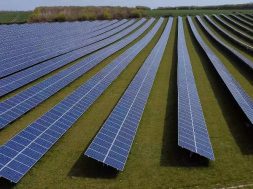
Dutch innovation makes solar cells more profitable
ECN (Energy research Centre of the Netherlands) has introduced a technique which reduces power loss in solar cells to a minimum. The innovative solution leads to higher efficiencies and in the future this may result in lower electricity costs. It is integrated with existing manufacturing processes, a novelty in the global PV industry. This innovation is the result of a fruitful collaboration between ECN and high-end equipment supplier for the solar industry Tempress Systems.
Layer between wafer and metal contacts
In today’s modern silicon solar cells, power conversion efficiency is significantly limited because of electrical losses that arise from the recombination of the light-generated electrons in the solar cell. ECN applies a ‘polysilicon’ layer between the silicon wafer and the metal contacts that are the main source of these losses. This extremely thin layer ensures electricity is conducted well, but also prevents voltage losses. The technique has already been successfully applied in microelectronics and solar cells in the laboratory, but ECN and Tempress Systems are the first to implement this innovative technique on industrial scale machines and solar cells.
Industrial processes
“An important advantage of the solution is the possibility for integration with existing mass production processes,” says Bart Geerligs, senior researcher at ECN. “Therefore it is not necessary to introduce much new process equipment. This innovation leads to robust improved results with perspective for lower electricity costs. The technology ‘stretches’ the efficiency limits of current solar cell technology. We have achieved a cell efficiency of 20.7% using this technology, and we expect to continue to make fast progress towards 25%”.
Industrial production process
Development engineer at Tempress Martijn Lenes: “Scaling up from a laboratory scale to an industrial process is often the biggest barrier for a successful implementation of a new promising technique. Therefore Tempress first used a prototype machine to see if the required layers can be produced simultaneously on a large enough scale. Once proven, we worked together with ECN to integrate these layers in a viable industrial production process.”
Export product for manufacturing
This Dutch innovation leads to more power per solar cell and has all the potential to become an innovative export product for worldwide solar markets. Because of this innovation the average (market) price of solar cells will decline and a wider public will embrace solar energy. Solar cells are applicable in many ways, for example on business rooftops, hospitals, schools, gymnasiums, power plants and private houses.
















